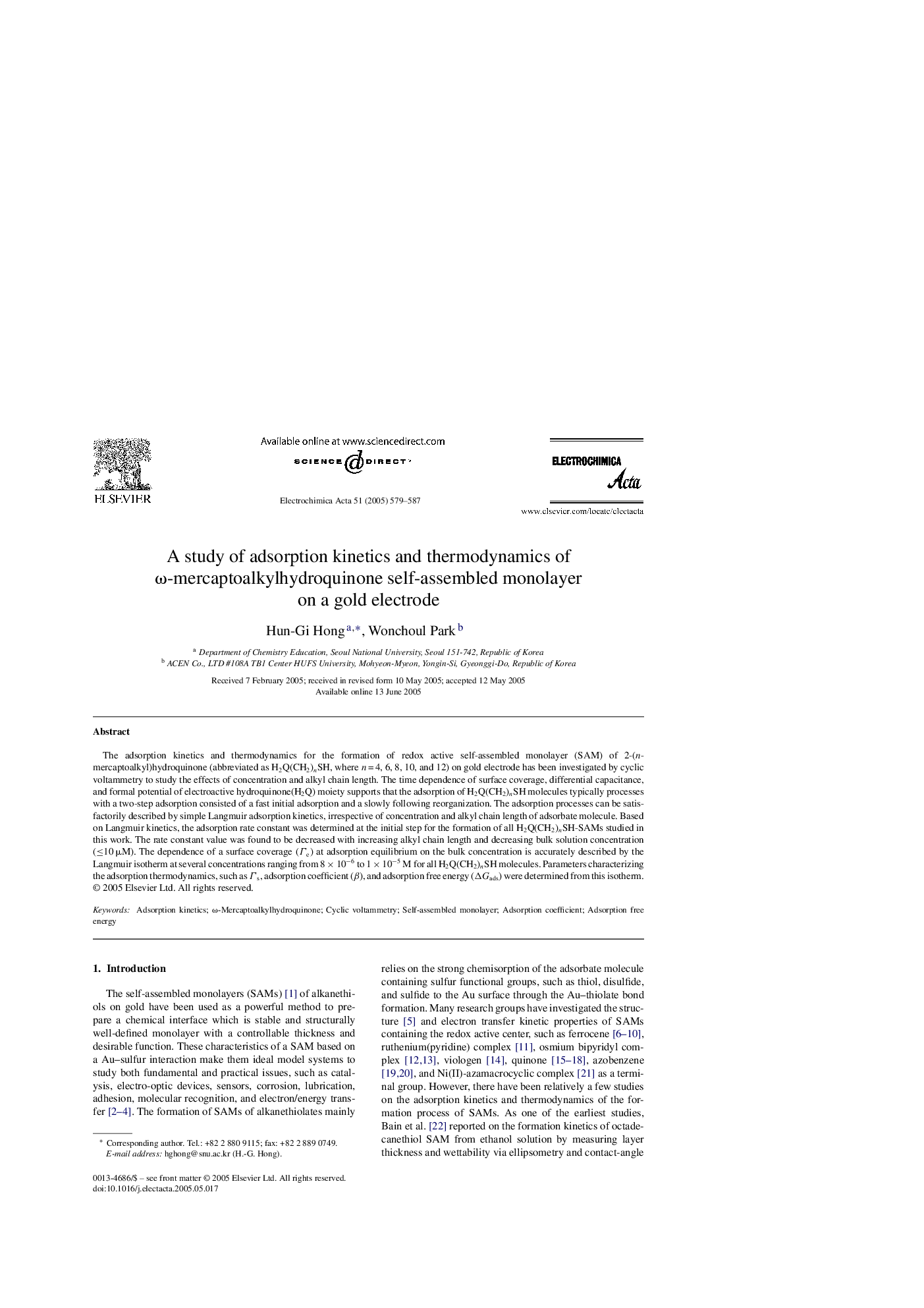| Article ID | Journal | Published Year | Pages | File Type |
|---|---|---|---|---|
| 10269270 | Electrochimica Acta | 2005 | 9 Pages |
Abstract
The adsorption kinetics and thermodynamics for the formation of redox active self-assembled monolayer (SAM) of 2-(n-mercaptoalkyl)hydroquinone (abbreviated as H2Q(CH2)nSH, where n = 4, 6, 8, 10, and 12) on gold electrode has been investigated by cyclic voltammetry to study the effects of concentration and alkyl chain length. The time dependence of surface coverage, differential capacitance, and formal potential of electroactive hydroquinone(H2Q) moiety supports that the adsorption of H2Q(CH2)nSH molecules typically processes with a two-step adsorption consisted of a fast initial adsorption and a slowly following reorganization. The adsorption processes can be satisfactorily described by simple Langmuir adsorption kinetics, irrespective of concentration and alkyl chain length of adsorbate molecule. Based on Langmuir kinetics, the adsorption rate constant was determined at the initial step for the formation of all H2Q(CH2)nSH-SAMs studied in this work. The rate constant value was found to be decreased with increasing alkyl chain length and decreasing bulk solution concentration (â¤10 μM). The dependence of a surface coverage (Îe) at adsorption equilibrium on the bulk concentration is accurately described by the Langmuir isotherm at several concentrations ranging from 8 Ã 10â6 to 1 Ã 10â5 M for all H2Q(CH2)nSH molecules. Parameters characterizing the adsorption thermodynamics, such as Îs, adsorption coefficient (β), and adsorption free energy (ÎGads) were determined from this isotherm.
Keywords
Related Topics
Physical Sciences and Engineering
Chemical Engineering
Chemical Engineering (General)
Authors
Hun-Gi Hong, Wonchoul Park,
